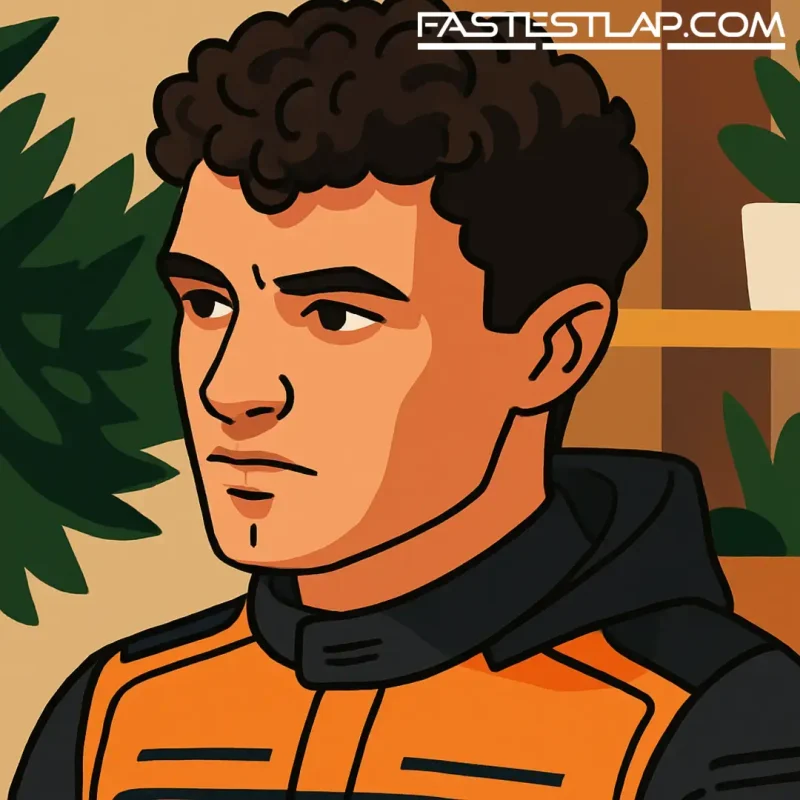Headline: ‘Even Lando paid’: McLaren–Palou court fight drags F1’s pay-to-test reality into the light
McLaren’s legal skirmish with Alex Palou has opened a window into the sport’s least-secret secret: getting F1 mileage can cost you, even if your name is Lando Norris.
In evidence aired in London as part of McLaren’s claim for more than $20 million in damages after Palou walked away from a 2023 agreement, a Motor Sport Magazine report says written documentation outlined eye‑watering figures tied to testing and Friday practice. The standout? Under cross-examination, McLaren Racing CEO Zak Brown is quoted as saying that “even Lando Norris” paid to be part of the F1 team until his full-time promotion for 2019.
For clarity: this isn’t the tabloid “pay driver” trope. It’s the modern reality of buying time in old cars or FP1 slots to get your foot in the door. According to the same report, Ryo Hirakawa paid McLaren around $3.5 million for two Testing of Previous Cars (TPC) runs and a 2024 Abu Dhabi GP FP1 outing. In other words, the ladder isn’t free. It’s never been.
Norris’s pathway is familiar. He joined McLaren’s driver programme in 2017, ran tests that year, stepped into seven FP1 sessions in 2018 as reserve, then graduated to a race seat in 2019 alongside Carlos Sainz. It’s worked out pretty well since. Now, in 2025, he and Oscar Piastri are locked in the sharp end of the title fight and McLaren is the benchmark team of the season, with the constructors’ championship wrapped up with races to spare. That arc—from paying for early access to carrying the team’s title charge—illustrates why these programs exist and why young drivers (or their backers) open their wallets.
Back to the courtroom. Palou, a multi-time IndyCar champion, has admitted he breached contract after reneging on his McLaren commitment in favor of continuing with Chip Ganassi Racing in America. He maintains he doesn’t owe McLaren financially. His camp argues McLaren dangled the prospect of a future F1 opportunity as part of the pitch; McLaren says no such promise was made. Palou’s side has also suggested McLaren kept their Oscar Piastri pursuit under wraps at the time, which, given how the Australian’s Alpine exit played out, will raise a few paddock eyebrows even now. Piastri made his F1 debut with McLaren in 2023.
None of this shocks insiders. FP1 time has become transactional, TPC programs are effectively rolling driver schools, and teams—especially those fighting at the front—put a premium on their cars and their calendars. Access costs money. The uncomfortable part is seeing the numbers in black and white and hearing Norris’s name attached to a system most would rather leave in the shadows.
There’s also a broader point here. McLaren has been ruthless and transparent about building a pipeline of elite talent across series. That aggressive approach has delivered Piastri, kept Norris on a steep upward curve, and powered a title-winning machine in 2025. But it’s also created collateral: bruised relationships, public courtroom theatre, and the occasional uncomfortable headline.
Strip away the legalese, and two truths remain. First, Palou believed he had reason to change course. Second, McLaren believes it paid for that decision and wants restitution. The court will decide who’s right. The paddock will move on to the next contract skirmish soon enough.
What lingers is the reminder that “pay to play” isn’t just about backmarkers buying seats. It’s about access to the sport’s machinery—be it a 2022-spec car on a private test day or a single FP1 run at Yas Marina—and the price of being in the room before you’re ready to race. Even future champions, even serial podium finishers, once had to pay the cover charge.
As for Norris and Piastri, they’ve got bigger concerns than a courtroom transcript. McLaren left Singapore with a double top-four result, Norris ahead, and the orange cars still setting the pace in a season that’s turned into an internal shootout for the drivers’ crown. Pay-to-test stories make for good copy. Winning titles writes the legacy.




